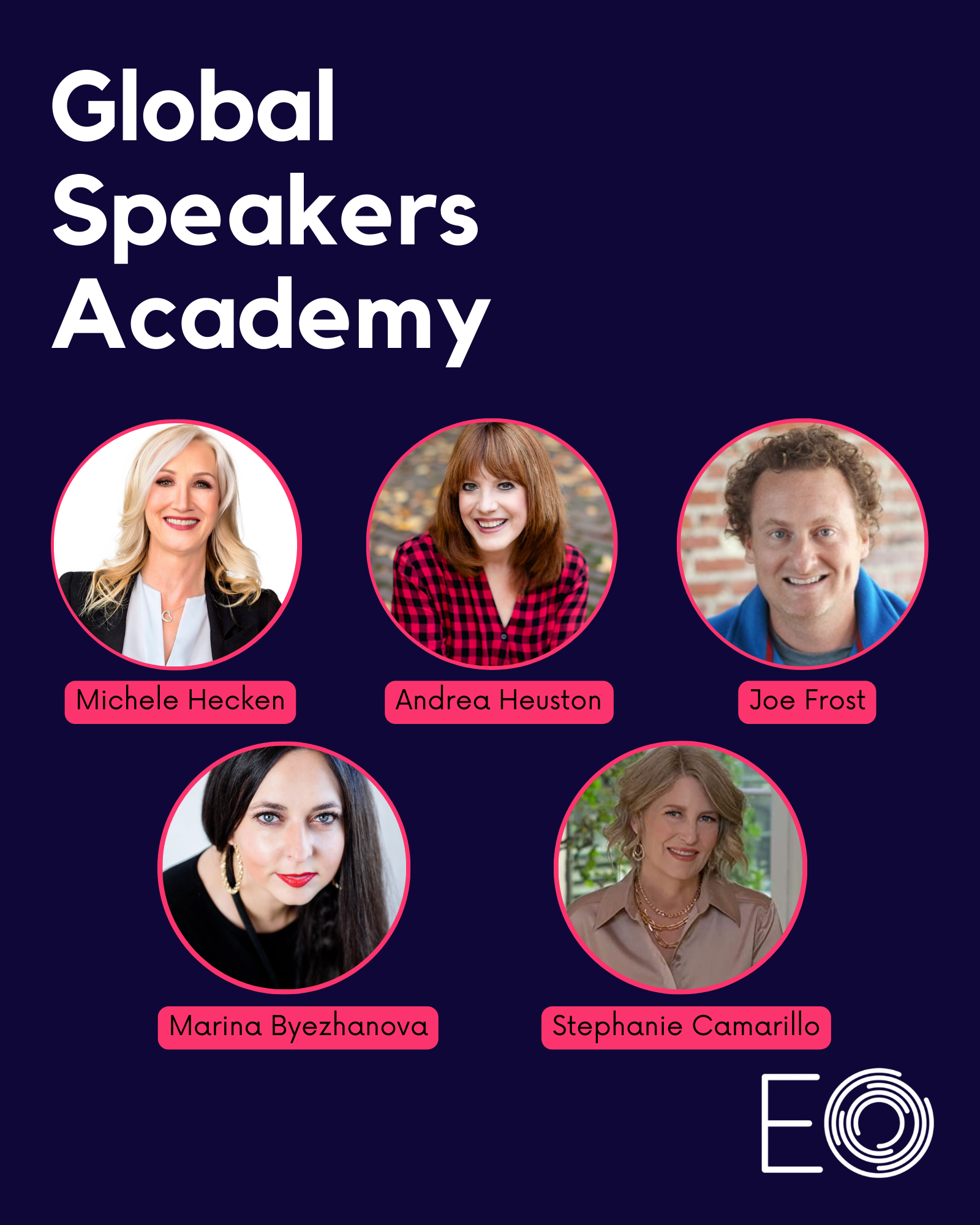
EmpowHER: EO Members Share How Businesses Can Better Support Family Life
In March, EO recognizes and celebrates women entrepreneurs with its second annual EmpowHER virtual conference, which focuses on the specific challenges women in business experience. In each one-hour session, women entrepreneurs will learn from experts how to navigate the three pillars of every woman entrepreneurs’ life: business, family and self.
We asked EO members how the workplace could and should change to improve women’s lives and empower better balance in regard to family. Here’s what they shared.
End the bias toward working moms
There’s a common belief that mothers can’t handle the amount of work it takes to succeed in upper management positions. This impacts current mothers as well as young female professionals who fear that choosing to have a child could limit their professional opportunities. I appreciate that moms are being more transparent about choosing help with their “second shift” as we see women taking a higher number of the top seats in corporations. The more we hear about the experiences of successful women, the less shame others will feel for following in their footsteps.
Removing the biases around working mothers would have a lasting impact on the workplace.
— Megan Milar, EO Cincinnati, CEO, The Garage Group
Shift toward more inclusive and diverse workplaces
As a woman CEO, I believe that we need to eradicate the culture of sexism and discrimination from businesses. We must ensure that all individuals, regardless of gender or any other aspect of identity, are given equal opportunities to succeed and thrive in the workplace and in business.
This means implementing policies and practices that promote diversity, equity, and inclusion. A shift toward more inclusive and diverse workplaces and suppliers where individuals from different backgrounds, ethnicities, and genders can thrive and succeed. This would benefit not only employees but also the business, as it would bring different perspectives, ideas, and ways of thinking to the table.
Finally, let’s end the notion that there is only one way to succeed in business. We need to embrace and celebrate different leadership styles, perspectives, and approaches. This will not only make businesses more inclusive and innovative but also create a more just and equitable society overall. Finally, we need more women on boards and in leadership.
— Amanda Ma, EO Los Angeles, CEO, Innovate Marketing Group
Offer flexibility and work-from-home options
Many of our employees are working mothers, and we’ve found the most significant way we can support their needs is by offering flexibility.
If kids need to be dropped off at school, come in after that, and work a couple hours later. If kids need to be picked up from school, it’s ok to start early and leave work early. As long as the work is done and we can all schedule meetings at dependable times, that’s what’s important.
We encourage people who don’t need to be in the production or fulfillment department to work from home, so that affords even more flexibility in caring for children (especially helpful during the pandemic). Ultimately, we’re a start-up, so we have the freedom to define how we want things to work, and we want to support flexibility.
— Danielle Vincent, EO Reno Tahoe, co-founder and CEO, Outlaw
No more Mom Guilt
As a woman CEO, I am too familiar with the pressure and guilt that comes with balancing motherhood and a career. The expectations placed on us as mothers and leaders are often unrealistic and unattainable, leading to feelings of inadequacy and guilt. It’s time for businesses to recognize the toll that mom guilt takes on women and their ability to thrive in their careers.
We need to shift the narrative from the idea that women must choose between being a “good mom” or a “good leader”. It is possible to be both, and businesses need to recognize and support this reality. This means providing flexible work arrangements, parental leave policies, and resources for working parents.
Additionally, we need to address the stigma that still exists around working mothers. Women should not be made to feel guilty for pursuing their career goals while also raising a family. We need to create a culture that celebrates and supports working mothers and recognizes the unique skills and perspectives that they bring to the table.
By eradicating mom guilt from the workplace, we can empower women to excel both as mothers and leaders. It’s time for businesses to step up and create a more inclusive and supportive environment for working parents.
— Becky Feinberg-Galvez, EO Chicago, CEO, Candor Threads
Stop making assumptions
Let’s eradicate gender biases about roles and responsibilities from the workplace. This means we should stop making assumptions and ask more questions. Let’s stop assuming that a woman should make the coffee or that a man should assemble new furniture. Let’s stop assuming that fathers are not responsible for childcare. And let’s stop assuming that only women should be taking parental leave.
We can help make the workplace more equitable by providing paid family leave for all employees, regardless of gender or parental status. And when leave is taken for parenting, we can encourage both mothers and fathers to take advantage of it and share in the responsibilities of raising children. These policies and practices recognize that every employee is an individual who brings their own talents and unique challenges to the workplace, neither constrained nor fully defined by their gender. And when we are finally able to do this, we will make work better for everyone.
— Kristen Prinz, EO Chicago, Founder and Managing Partner, The Prinz Law Firm
Don’t miss EO’s 2023 EmpowHER virtual series on 7, 14 and 21 March (the first three Tuesdays of the month). EmpowHER invites women entrepreneurs to hear inspiring stories from fellow founders—including Randi Zuckerberg, founder and CEO of Zuckerberg Media and former head of marketing at Facebook; Aanchal Bhatia, founder of Sydenham Clinic; Hannah Vasicek, founder of Francesca; and Helle Thorning-Schmidt, former prime minister of Denmark—during a series of virtual events that are free and open to EO members, EO Accelerators, their companies, and prospective EO members. Register today!
On 14 March, entrepreneur Aanchal Bhatia, founder of the Sydenham Clinic, will share insights on How to be the CEO of your family, and Hannah Vasicek, founder of the jewelry brand Francesca, will speak on How to live a time-rich life. This seminar is free and open to anyone, upon registration. Sign up here to EmpowHER today.
For more insights and inspiration from today’s leading entrepreneurs, check out EO on Inc. and more articles from the EO blog.









